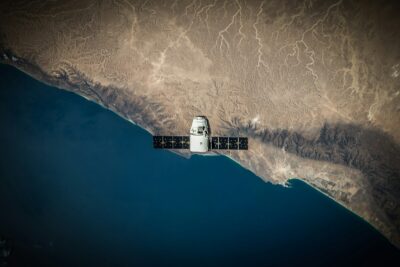The Future Evolution of Satellite Navigation Systems in Aviation
Advancements in Next-Generation Satellites
The future evolution of satellite navigation systems is poised to bring significant improvements to the aviation industry, primarily through the deployment of next-generation satellites. These satellites are designed to offer higher precision, greater coverage, and enhanced reliability, addressing many of the current limitations in navigation technology. As aviation continues to grow globally, the need for robust and dependable navigation systems becomes ever more critical. Next-generation satellites, equipped with advanced technologies, are set to revolutionize how aircraft navigate, ensuring safer and more efficient flights.
One of the key features of these next-generation satellites is their ability to provide more accurate positioning data. This increased precision is essential for various aviation operations, including landing approaches, route planning, and avoiding collisions. By leveraging advanced signal processing and enhanced algorithms, these satellites can deliver centimeter-level accuracy, a significant improvement over current systems. This level of precision will not only enhance safety but also enable more efficient flight paths, reducing fuel consumption and operational costs.
Furthermore, the deployment of these new satellites will expand the coverage of satellite navigation systems to previously underserved regions. This global reach ensures that even remote and less developed areas will benefit from reliable navigation services, promoting economic growth and connectivity. The comprehensive coverage provided by next-generation satellites will be particularly beneficial for countries like Saudi Arabia and the UAE, where rapid development in aviation infrastructure necessitates cutting-edge navigation solutions.
Enhanced Signal Integrity and Reliability
Another critical aspect of the future evolution of satellite navigation systems is the improvement of signal integrity and reliability. Signal integrity refers to the accuracy and consistency of the navigation signals transmitted by satellites, which are vital for ensuring the safe and efficient operation of aircraft. Enhanced signal integrity will reduce the risk of navigation errors, which can lead to significant safety incidents. As aviation technology advances, maintaining high levels of signal integrity becomes increasingly important.
To achieve this, next-generation satellites will incorporate advanced technologies that monitor and correct signal errors in real-time. These innovations include multi-frequency transmission, which can mitigate the effects of atmospheric disturbances and other interferences. By using multiple frequencies, the satellites can provide more robust and reliable signals, ensuring that aircraft receive accurate positioning information at all times. This reliability is crucial for critical phases of flight, such as takeoff and landing, where precise navigation is paramount.
In addition to multi-frequency transmission, these satellites will employ sophisticated algorithms to detect and compensate for signal anomalies. This proactive approach to signal management will significantly enhance the resilience of navigation systems, making them more dependable in various operational environments. As a result, pilots and air traffic controllers will have greater confidence in the accuracy of their navigation data, leading to safer and more efficient flight operations.
Advanced Anti-Jamming Capabilities
As the reliance on satellite navigation systems in aviation increases, so does the threat of signal jamming and interference. Jamming can disrupt navigation signals, potentially leading to dangerous situations for aircraft. The future evolution of satellite navigation systems addresses this challenge by incorporating advanced anti-jamming capabilities. These capabilities are designed to protect navigation signals from intentional and unintentional interference, ensuring the continuous and reliable operation of navigation systems.
One of the primary methods for enhancing anti-jamming capabilities is through the use of beamforming technology. Beamforming allows satellites to focus their signals in specific directions, reducing the likelihood of interference from external sources. By concentrating the signal strength in targeted areas, beamforming can effectively counteract jamming attempts, maintaining the integrity of the navigation system. This technology will be particularly beneficial in high-traffic areas and regions prone to electronic interference.
Moreover, next-generation satellites will be equipped with sophisticated anti-jamming algorithms that can detect and mitigate interference in real-time. These algorithms analyze the signal environment and adjust the transmission parameters to counteract any detected jamming attempts. This dynamic response ensures that the navigation system remains operational even in challenging conditions, providing uninterrupted service to aircraft.
Impact on Aviation Navigation Capabilities and Resilience
The enhancements in satellite navigation systems will have a profound impact on aviation navigation capabilities and resilience. With the deployment of next-generation satellites, improved signal integrity, and advanced anti-jamming capabilities, the aviation industry will experience a significant boost in navigation accuracy and reliability. These advancements will translate into safer, more efficient, and resilient flight operations.
One of the most notable benefits will be the ability to conduct precise and efficient flight paths, reducing fuel consumption and emissions. By leveraging accurate positioning data, airlines can optimize their routes, minimizing unnecessary detours and delays. This efficiency not only lowers operational costs but also contributes to environmental sustainability, aligning with global efforts to reduce the aviation industry’s carbon footprint.
Furthermore, the enhanced resilience of satellite navigation systems will ensure continuous and reliable service, even in adverse conditions. This resilience is particularly important for regions like Saudi Arabia and the UAE, where harsh environmental conditions can pose challenges to navigation systems. The advanced technologies incorporated into next-generation satellites will provide robust and dependable navigation solutions, supporting the growth and development of the aviation sector in these regions.
Conclusion
In conclusion, the future evolution of satellite navigation systems holds immense promise for the aviation industry. The deployment of next-generation satellites, coupled with improved signal integrity and advanced anti-jamming capabilities, will revolutionize how aircraft navigate. These advancements will lead to safer, more efficient, and resilient flight operations, benefiting both the aviation industry and the global economy. As countries like Saudi Arabia and the UAE continue to invest in aviation infrastructure, the adoption of cutting-edge satellite navigation systems will be crucial for their success. Embracing these technological advancements will ensure that the aviation sector remains at the forefront of innovation and progress.
—
#SatelliteNavigation #NextGenSatellites #AviationTech #SignalIntegrity #AntiJamming #AviationSafety #ModernAviation #TechInnovation #SaudiArabia #UAE #Riyadh #Dubai























